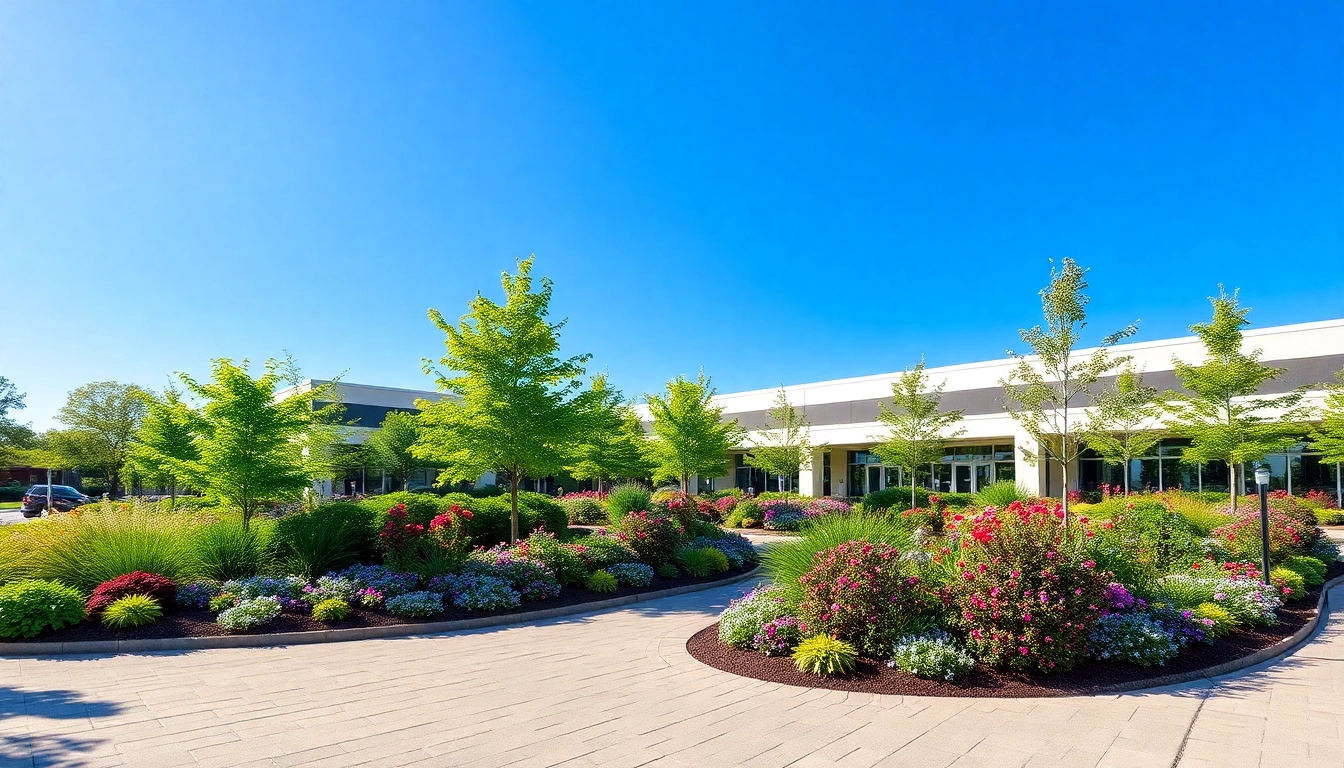Understanding International Real Estate Development
Defining International Real Estate Development
International real estate development is the process of planning, designing, financing, and constructing real estate projects across different countries and regions. This multifaceted discipline combines aspects of real estate investment, urban planning, finance, and architecture, with unique challenges stemming from differing regulations, cultural norms, and market dynamics. Developers often engage in the intricate task of balancing local market needs with broader global strategies to achieve profitable outcomes.
The Importance of Global Market Insights
In today’s interconnected world, understanding the nuances of various international markets is critical for successful real estate development. Global market insights allow developers to identify opportunities, evaluate risks, and navigate potential challenges effectively. With access to data on demographic trends, economic indicators, and local real estate conditions, developers can tailor their projects to meet market demand. Moreover, insights into geopolitical factors and socio-economic conditions can shape investment strategies, impacting everything from location selection to pricing strategies. An understanding of these diverse elements is vital for professionals involved in international real estate development.
Current Trends in International Real Estate Development
The landscape of international real estate development is ever-evolving, influenced by technological advancements, environmental considerations, and shifting consumer preferences. Some current trends include:
- Sustainable Development: There is a rising demand for eco-friendly buildings and sustainable urban environments. Developers are increasingly seeking ways to minimize their carbon footprints through energy-efficient designs, renewable materials, and innovative waste management systems.
- Urbanization: As more people migrate to urban areas, there is a growing need for residential and commercial spaces. Developers are focusing on mixed-use properties that combine living, working, and recreational spaces, enhancing overall community sustainability.
- Technological Integration: The incorporation of technology in real estate development is transforming how projects are conceived and executed. Smart building technologies are enabling more efficient energy use, while data analytics are guiding investment decisions and market strategies.
Key Challenges in International Real Estate Development
Navigating Regulatory and Legal Issues
The international real estate landscape is shaped by a complex tapestry of laws and regulations which can vary significantly from one country to another. Understanding local property laws, zoning regulations, tax frameworks, and compliance requirements is crucial to avoid costly mistakes and ensure successful project execution. Additionally, legal considerations surrounding land ownership, foreign investments, and environmental assessments demand thorough examination and adaptable strategies.
Mitigating Financial Risks in Development
Financial risk management is paramount in international real estate development. Factors such as currency fluctuations, geopolitical instability, and varying interest rates all contribute to financial uncertainty. Developers need to employ robust financial modeling, conducting comprehensive risk assessments, including scenario analysis and sensitivity testing to prepare for potential economic shifts. Utilizing financial hedging strategies and diversifying funding sources can further mitigate risks.
Addressing Cultural Differences in Market Approach
Cultural awareness plays a significant role in international real estate development. Understanding local customs, consumer behavior, and social structures allows developers to tailor their projects effectively. Marketing strategies that resonate with local audiences must align both aesthetically and functionally with community values and lifestyles. Engaging local stakeholders through consultations can foster goodwill and enhance the acceptance of new developments.
Best Practices for Successful International Projects
Conducting Comprehensive Market Research
A strong foundation for any international real estate project lies in thorough market research. This involves analyzing demographic data, economic trends, and competitor activities. Understanding the specific demands of the local population, housing market dynamics, and investor expectations can inform strategic decisions, from design and location to pricing and marketing.
Utilizing Technology for Development Planning
Technology is a powerful ally in the realms of planning and execution of real estate projects. Advanced project management software helps in tracking timelines, budgets, and resources, while Building Information Modeling (BIM) can facilitate design and collaboration among stakeholders. Utilizing predictive analytics allows developers to forecast trends and assess the viability of projects more effectively.
Building Strong Local Partnerships
Partnerships with local firms and stakeholders can facilitate smoother project development. Local partners possess valuable insights into the market and governance structures, helping to navigate administrative hurdles more efficiently. Collaboration with architects, engineers, and contractors familiar with local regulations can enhance project quality and timeliness. Establishing strong community ties can promote goodwill and foster positive relationships essential for project success.
Evaluating International Real Estate Development Opportunities
Assessing Market Viability and Demand
Evaluating market viability begins with understanding the local economy and its potential. Factors such as employment rates, population growth, and migration patterns provide crucial context for assessing demand for residential and commercial spaces. Developers must identify specific needs within the market, whether it involves expanding housing, shopping centers, or office spaces, tailoring projects to meet these demands promptly.
Analyzing Economic Indicators and Trends
Economic indicators such as GDP growth, interest rates, and inflation significantly impact real estate development. Analyzing these metrics offers insights into market health and future performance potential. Additionally, understanding regional investment climates, infrastructure developments, and government policies can shape investment strategies and project timelines while optimizing resource allocation.
Understanding Local Competition and Positioning
A detailed analysis of the competitive landscape is essential for refining a project’s positioning strategy. Identifying direct competitors, understanding their offerings, and evaluating their strengths and weaknesses can inform how to effectively differentiate a development. Factors such as pricing strategies, target demographics, and marketing approaches can substantially influence a project’s success. Through careful differentiation and identifying a unique value proposition, developers can capture market share and achieve sustainable profitability.
Measuring Success in International Projects
Key Performance Indicators for Development
Success in international real estate development can be gauged through various Key Performance Indicators (KPIs). Metrics like return on investment (ROI), occupancy rates, and sales prices vs. projections help determine the financial success of a project. Further, tracking tenant satisfaction and community engagement can provide invaluable insights into the project’s longer-term impacts beyond mere financial metrics.
Long-term Sustainability Considerations
Incorporating sustainability into the development process is not just about meeting current market demands but also ensures long-term viability. Developers must consider environmental impacts, resource management, and the socio-economic benefits of their projects. Creating adaptable spaces that can evolve with changing market needs promotes resilience against economic fluctuations and environmental changes.
Feedback Loops and Continuous Improvement Strategies
Establishing robust feedback mechanisms for both internal teams and external stakeholders aids tremendously in driving continuous improvement. Collecting feedback from tenants, investors, and the surrounding community can deliver insights into the project’s ongoing performance and inform future developments. Implementing iterations based on real-time data and experiences not only enhances project outcomes but reinforces long-term strategic success.



